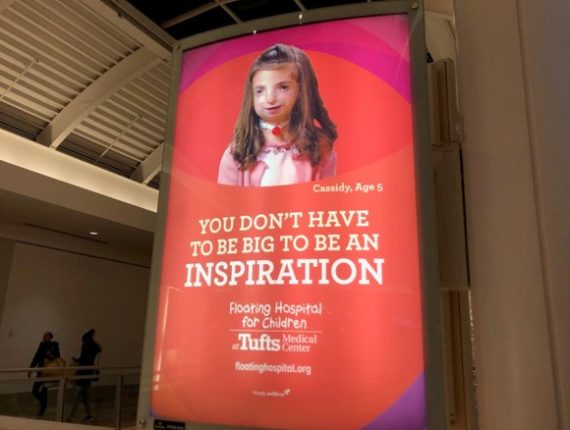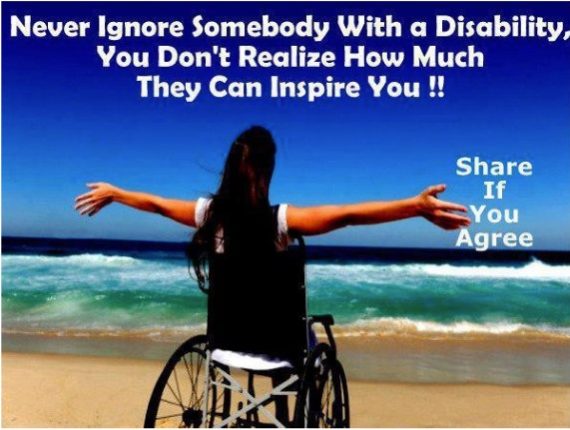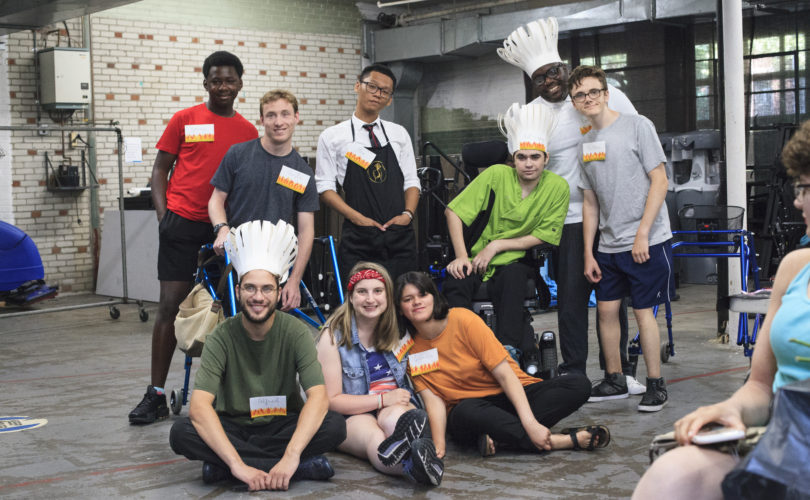First of all, what is ableism? Ableism is the discrimination against people with disabilities, essentially the cause of many disparities youth and people of all ages face in the disability community. There are many different examples of ableism like discrimination and “able privilege,” which refers to the way our society is structured in favor of able-people.
Here are just a few examples of able privilege:
- Only ⅓ of New York City subways are accessible to wheelchair users and people who are unable to use the stairs.
- Those without disabilities don’t require extensions, extra time on tests, extended absences, or any other additional accommodations in school because of a mental illness, ADHD, autism, or other disabilities.
- Able people can assure themselves that their ability to perform at a job will not discourage employers from hiring them, and don’t have to worry about disclosing their disability to their employers.
Although it is not your fault, we think it’s important for everyone to recognize ableism in our everyday lives. Here are four common examples:
1. Society sets low standards and expectations for people with disabilities. Consciously and subconsciously, able people see others with disabilities as “incapable” or “inferior.”
Our National Inclusion Manager and IT Quality Administrator Piper Slowinski has witnessed this example many times as she volunteers at camps for kids with disabilities.
“I spend lots of time volunteering at camps for kids with various kinds of disabilities, and you see many well-intentioned folks reinforcing low standards on many of the kids there. It’s never coming from an intentional or bad-hearted place, but it’s things like, “We’re moving too slow, we need to help this child get dressed so we can make it to breakfast on time.” And, “I want everyone to keep up with one another, so instead of redesigning an activity to allow for different paces and styles, I’m going to hurriedly help this child along,” said Piper.
I then went on to ask Piper why this is problematic.
“It tells that child that we don’t expect much of them, and given time, they’ll start to believe the limits that others impose upon them. If we tell a child they can’t do something, even if they can do it when given the chance, they’ll start to internalize that and believe it. By our actions, we create and shape reality – and that reality can trap many people with disabilities into incorrectly internalizing.”
If we truly believe youth and people with disabilities are capable, they will be able to live a life of dignity, pride, and purpose.
2. Many people make the assumption that if someone has a disability you can see, they must have an intellectual one too, which is most definitely not the case. The two do not coincide.
Tyler, a former PYD mentee and current online mentor has experienced this exact encounter one too many times.
“The public is often extremely quick to generalize that blindness equates to me being less intelligent or less capable of leading a quality, independent life. I have been able to enjoy tremendous success in my personal and professional endeavors with accommodations in place.”
Tyler then goes on to explain how people treat him as if he is less mature or younger than he really is. He tells me about a recent encounter with a stranger as he was simply crossing the street.
The woman approached Tyler insisting she help him because he seemed “confused;” reiterating that the street was dangerous and he shouldn’t be on it alone.
This instance is merely one of many examples, but Tyler felt her actions were patronizing to assume he was incapable of independently crossing the street.
Each instance is unique, but over the years Tyler has become a strong advocate for himself and the community by using every scenario like this one to educate others on the fact that although he is blind, he is able to adapt to the world around him.
“Many improvements have been made when it comes to acceptance and understanding of disability, but we are far from a completely tolerant and accepting society,” said Tyler.
Tyler pursues his masters degree in public administration and envisions himself developing policies at local, state, and federal levels to create more opportunities for the disability community.
3. There are ableistic words embedded in our language used as disrespectful slang and insults, like “They’re so retarded,” or “She’s absolutely crazy.”
These are more commonly frowned upon, but there are many you may not know reference disability in their definitions. Here are some examples:
- Dumb
Lacking the power of speech; temporarily unable to speak; refraining from any or much speech; silent.
You can view the definition here.
- Lame
Crippled or physically disabled, especially in the foot or leg so as to limp or walk with difficulty; impaired or disabled through defect or injury; weak, inadequate, unsatisfactory, clumsy.
You can view the definition here.
- Insane
Not sane; not of sound mind; mentally deranged; of or relating to a person who is mentally deranged; utterly senseless.
You can view the definition here.
- Moron
(This term is no longer in technical use in psychology because it is now considered offensive.) A person of borderline intelligence in a former and discarded classification of mental retardation, having an intelligence quotient of 50 to 69.
You can view the definition here.
4. Inspiration porn: Able people view and use people with disabilities solely as objects of their own inspiration. The term inspiration porn was coined by Stella Young, an Australian comedian, journalist, and disability rights activist.
Throughout her life as a person with a disability, she witnesses numerous instances of inspiration porn. In the video below, she told a story of when she was nominated for a community achievement award in her hometown at 15 years old. Her parents questioned the nomination because she hadn’t actually achieved anything yet. She went on to explain that if you took disability out of the equation, she wasn’t doing anything out of the ordinary. She was just an everyday student attending high school.
Later in life, she gave a lecture to a group of high school students. During the lecture, a boy raised his hand and said “When are you going to start the motivational speech? Usually when people in wheelchairs come to school they start saying motivational stuff.”
And in that moment, she realized people only see the disability community as objects of inspiration.
“For many people we are not real people. We are there to inspire,” said Stella.
That’s not to say people with disabilities can’t inspire you. If Stella achieved something out of the ordinary at 15, then of course the excellence award would have been warranted, and you could be inspired by her!
Read more about inspiration porn here.
Here are some real world examples of inspiration porn from the internet and beyond:

Not only is this inspiration porn, but the quote implies that disabilities are inherently a bad thing.


Piper then went on to explain what an everyday person can do themselves to change this narrative. She suggests we all begin to be mindful of our language and stop referring to disabilities as something that makes another person weak or less than.
“And instead, we need to recognize that for many people with disabilities, they are not “disabled” by anything intrinsic to who they are, but by the environments they are in. And we all have the ability to create more inclusive environments through our actions and words that empower people with disabilities rather than disempower them.”

